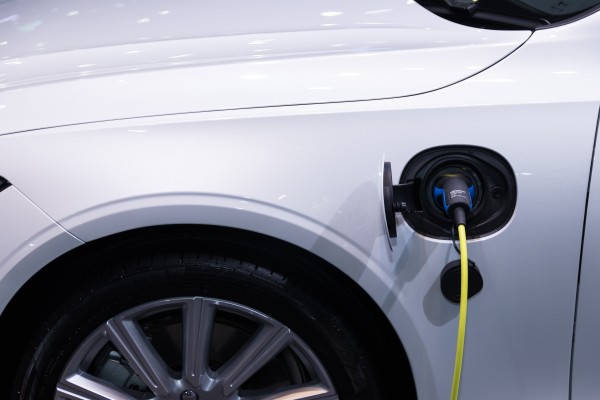What’s making the Electric Vehicle market the new hot property to invest?
by Vishal
09/05/2022 4 min read

What’s the current status of the Electric Vehicle market?
Since 2010, according to Skyquest, the annual increase in the use of electric vehicles has increased from 46% to 69%. As a result, the value of cars with combustion engines continues to be eroded by electric vehicles. Although the industry is still in its early stages, it has the potential for rapid expansion. In 2018, over 2% of the world's passenger vehicles were electric, indicating that, while the market is still in its early stages, it has the potential for rapid growth.
Tesla's stock price also managed to rise dramatically in the last two years. Thanks to the electric-vehicle manufacturer's stock, Tesla is now the fifth most valuable stock in the United States, up from US $752 billion recorded at end of 2021 and US $117 billion in January 2020, when it was the 64th most valuable stock. The 18-year-old business, which went public in 2010, currently outperforms Warren Buffett's Berkshire Hathaway, Johnson & Johnson, and Home Depot.
But the question arises, is Tesla the only profitable electric vehicle market to look at? Well, the data suggests something more.
According to Skyquest, global automakers intend to spend more than US $500 billion on electric vehicles and batteries by 2030, spending aimed at weaning car customers away from fossil fuels and fulfilling increasingly stringent decarbonization targets.
To get Free Sample report on the Electric Vehicle Market: Click Here
What could be the possible reasons for increase?
In 2021, several factors contributed to a rise in electric vehicle registrations. Electric car sales in 2021 have more than doubled year-on-year to 6.6 million, representing close to 9% of the global car market. Electric vehicle sales quadrupled in 2021 compared to the previous year. Throughout 16 million electric cars are already on the road around the world, consuming around 30 terawatt-hours (TWh) of power every year, which is comparable to all of Ireland's electric generation.

Europe took the lead for the first time, with 1.4 million new registrations. China came in second with 1.2 million new electric vehicle registrations, followed by the United States with 295, 000 new electric vehicles.
So, how come such a positive outcome from the European EV market?
Well, there are certain reasons accounting for the same. One reason could be on the basis of the total cost of ownership, electric automobiles are increasingly becoming more competitive in several countries. Also, several governments within the European region have granted or extended fiscal incentives to help electric car buyers solve the crisis in the auto industry.
According to the European Union's "Fit for 55" programme, there is a heavy intent to bring together climate, energy, land use, transportation, and taxation policies to reduce net greenhouse gas emissions by at least 55% by 2030, while the Biden administration has set a 50% electric vehicle (EV) target for 2030. In addition to these regulations, most governments are either already in process or are in talks to grant EV subsidies.
Over the last decade, the EV industry has garnered more than US $400 billion in funding, with over US $100 billion of it coming just the start of 2020. EV battery start-ups—both hardware and software firms—raised more than US $3.6 billion by 2021. All the funds are in plan to go to enterprises and start-ups that are working on electrifying mobility, linking vehicles, and developing autonomous driving technology. It's also worth noting how transaction flow has increased as the ecosystem surrounding EV batteries, such as battery design and charging technologies, has expanded. Whereas prior years witnessed only a few dozen acquisitions each year, 2021 more than quadrupled that figure.
Some Of the Most Significant Fundings in the EV-Battery Segment, 2021
- SES, a Woburn, Massachusetts-based company that has created a hybrid lithium metal battery, has closed a US $139 million Series D sponsored by General Motors.
- Solid Power, located in Louisville, Colorado, secured a US $130 million Series B round headed by Ford Motor Company, BMW Group, and Volta Energy Technologies. Late last year, the business went public through a SPAC.
- Oyika, a Singapore-based provider of charging infrastructure, has secured a US $100 million investment round.

Is it worth for the manufactures to invest in BEV’s and EV batteries?
China, the world's biggest manufacturer of electric cars and supplier of key component components for electric vehicles, dominates the Asia Pacific electric vehicle sector. According to the International Energy Agency's global electric vehicle forecast, China will be the industry leader in 2030, with a market share of over 57%.
In addition, major automakers such as GM and Volkswagen are expanding their operations in China. Electric passenger vehicles, specifically, are gaining appeal among customers, and they now account for the greatest percentage of total electric vehicle sales in Asia-Pacific
According to Skyquest, the various reasons for the same could be:
1. The increasing favourable government policies and subsidies for promoting the adoption of electric vehicles, growing awareness of the role of electric vehicles in reducing emissions, rising fuel prices, and proactive participation by automotive OEMs in producing electric passenger vehicles are all factors contributing to this segment's large market share.
2. Passenger cars are the most prevalent means of transportation because of their low weight and large designs, which provide safety, dependability, and comfort. Automobile manufacturers are combining their R&D resources to create and develop electric passenger vehicles with the goal of lowering pollutants, boosting design flexibility, increasing speed-to-weight ratios, and allowing for longer ranges on a single charge.
Witnessing this surge in demand, manufacturers have also been pushed to supply electric vehicles all over the world due to factors such as rising demand for low-emission commuting and governments encouraging long-range, zero-emission vehicles via subsidies and tax refunds.
As a result, the market for electric vehicles is becoming increasingly popular. Emission reduction targets have been set by countries all over the world based on their unique capabilities and electric vehicles are one of the solutions in a list of many. This automobile industry's transition to electrification will disrupt the whole supply chain and result in a considerable shift in the size of the automotive component market.
Considering the same time period, the cost of EV batteries has also decreased due to technological improvements and the mass production of EV batteries in enormous volumes. Because EV batteries are one of the more expensive aspects of an electric car, this has resulted in a reduction in their cost.
In 2010, the cost of an electric vehicle (EV) battery was roughly US $1,100 per kWh. However, by 2021, their price had dropped to roughly US $137 per kWh, while in China, it was as low as the US $100 per kWh. This is due to lower battery manufacturing costs, lower cathode material prices, and increased production volumes, among other listed factors. Also, underpinned by supportive policies and technological advancements, the global electric vehicle fleet grew significantly during the last decade.
By 2030, EV battery prices are predicted to drop to roughly US $60 per kWh, making electric vehicles significantly less expensive than traditional ICE vehicles.
Also, these critical components for electrification, including batteries and electric drives, as well as autonomous driving, such as light detection and ranging (LiDAR) sensors and radar sensors, are expected to account for nearly 52% of the entire market. Components that are only utilised in ICE vehicles, such as traditional transmissions, engines, and fuel injection systems, will also experience a considerable reduction to around 11%.
To get Free sample report copy of this Industry Click Here
How does the market of Electric Vehicle currently look like?
Coming to the market growth which has been achieved till now and what is expected in the coming years, from more than 2.1 million units in 2020 to more than 4 million units in 2026, the worldwide electric vehicle market is predicted to rise at a volume CAGR of more than 20%.

In the electric vehicle market, Asia Pacific currently holds the biggest market share, thus major manufacturers are concentrating their efforts in rising markets such as China, India, and Brazil. In addition to this, certain market players have focused on the expansion of existing facilities and the establishment of corporate offices in the Asia Pacific to take advantage of economies of scale and expand their worldwide market shares.
While first-generation EV purchasers relied primarily on private charging (80% of EV buyers in Europe have access to private charging by 2020), the next generation is predicted to rely on public charging.


According to analysis and report by Skyquest, more than half of Europeans are predicted to live in multifamily housing without access to private chargers, and the addition of public chargers will ensure that EVs are viable for long-distance travel, which is still one of the major concerns among a lot of prospective EV customers.
The Electric Vehicles also aims to hasten this global adoption of electric vehicles. The demand for battery electric vehicles and plug-in electric vehicles is expected to surge in the next coming years.
Is EV market worth for you as an investor and where should you invest?
So, when it comes to the talk of investment, both the government and consumers are expected to increase their spending on the electric vehicle market. As seen above, the whole rise in government spending occurred in Europe, as many governments responded to the pandemic-induced economic crisis by implementing incentive programmes that boosted electric vehicle sales.
Some big automakers, such as Toyota, are substantially investing in electric vehicles and offering investors the option of investing in both traditional and electric automobiles. In the United States, significant electric car models from Chevrolet and Nissan are also available. Investors should carefully assess possible investment opportunities and weigh the risk-reward trade-off offered by electric vehicles and the automotive industry.
Electric vehicles have taken up, and a lot of the population is already on the right track to reduce the three problems we mentioned in the beginning, albeit more effort is needed. It's an industry shift that's happening at a breakneck pace. EV is an industry that is currently cutting across industries, encompassing players in energy, infrastructure, mobility, and automobiles.
While this is a significant issue, it also gives a significant opportunity for incumbents and newcomers to play a leadership role in the creation of new multibillion-dollar sectors and jobs. Be it through the creation of charging stations or making more efficient batteries, through new technologies and a well-guided transportation revolution, the aim will be to marry sustainability with economic feasibility.
SkyQuest provides market insights that fuel your growth. Our insights are a base for you to innovate and understand the needs of your consumers. Reach your goals with data that will give you deep-rooted insights into your industry.





















 USA (+1) 351-333-4748
USA (+1) 351-333-4748
